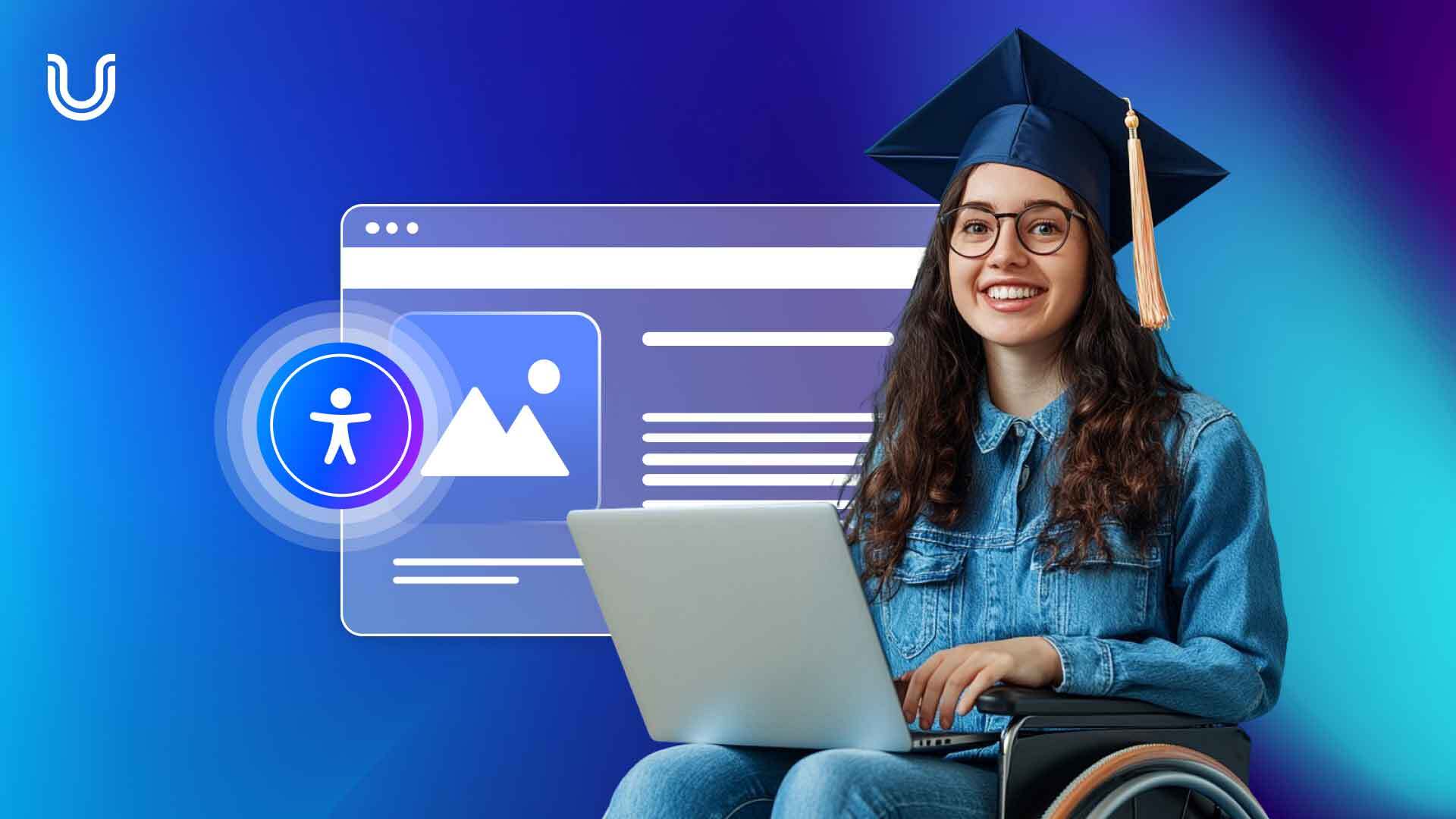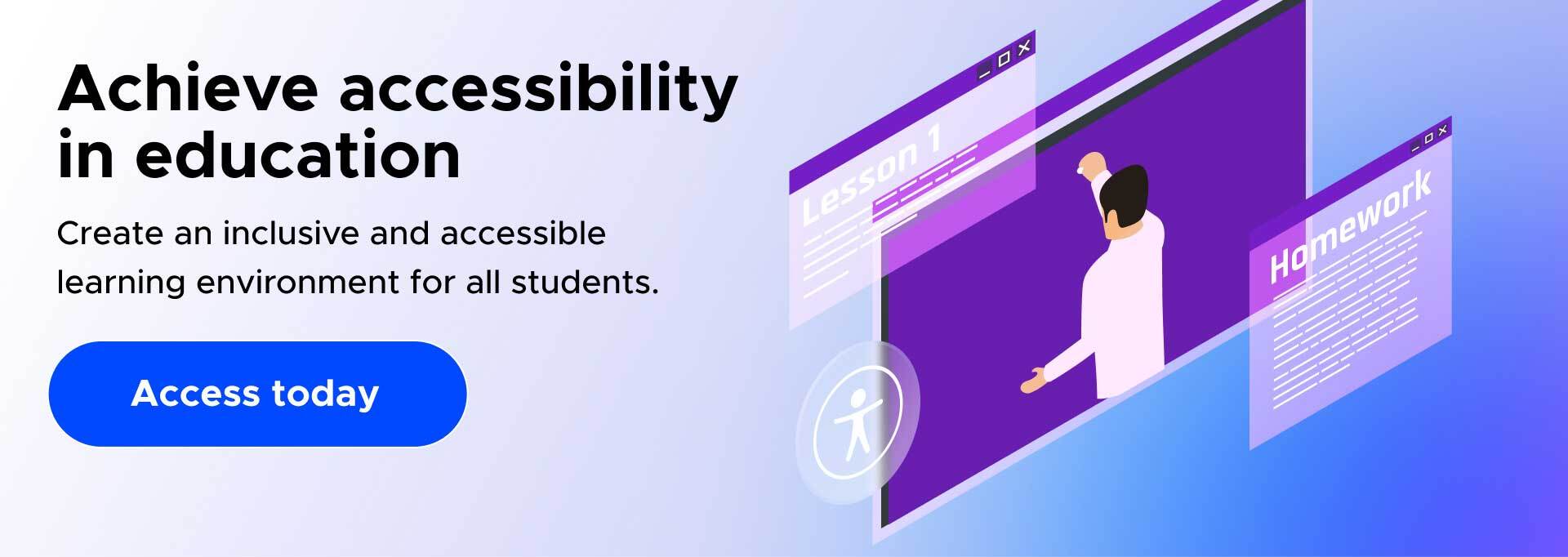How inclusive education benefits can overcome learning barriers

Inclusive education and its related benefits are essential to teaching and learning. They transcend physical accommodations like ramps and special programs, creating equitable learning spaces where every student can access the support they deserve.
But how does an inclusive school environment look, and how does it apply to what transpires in classrooms? How do we implement these inclusive education strategies and principles in teaching? And what aspects of inclusion might we be missing in our approach? Let’s explore these questions to understand better what ‘inclusion in education’ means.
We’re kicking off with a ‘lightning round’ of Q&As, exploring different aspects of inclusivity in education. We’ve compiled various questions covering several angles of this hot topic.
Let’s dive in.
How do best practices work in inclusive education?
Inclusive education is an ongoing effort to provide quality education for everyone while respecting diversity, recognizing different student needs and abilities, understanding individual characteristics and learning expectations, and working to eliminate all forms of discrimination.
How can teachers navigate inclusive education models?
Teaching professionals can navigate accessibility in education by staying informed about diverse student needs, regularly updating their knowledge of accessibility standards, and utilizing assistive technologies. They should embrace collaborative teaching with notable education experts and attend professional development workshops on inclusive teaching practices. They must engage with students to understand their unique challenges and adapt teaching methods and individualized education plans to create an inclusive learning environment.
How do educators integrate inclusive education policies?
Educators use many strategies to make inclusive education happen. They accommodate their teaching methods to suit different learning needs, creating learning spaces where everyone respects and appreciates each other’s differences. They also work closely with support teams and specialists to give personalized help. Educators also involve parents and guardians, ensuring everyone is in the loop. The goal? To create a place where every student can shine, regardless of background or abilities.
Why does inclusion in particular education matter?
In the 2021–22 school year, 7.3 million students aged 3–21 received special education and related services under the Individuals with Disabilities Education Act (IDEA). The sheer numbers alone demonstrate why inclusion in special education is a big deal. It’s about ensuring that students with disabilities get the same chances as everyone else to learn and grow alongside their peers. Inclusion in special education fosters a sense of belonging and confidence and opens opportunities that students with diverse needs might not have had otherwise.
What kind of training can help teachers become more inclusive in their teaching?
Teachers should receive training that covers a few key areas. First, they must learn about special education techniques to support diverse student needs. Second, cultural competence and empathy training can help them understand and connect with students from different backgrounds. And they also need to become tech-savvy. That means diving into digital accessibility so they can create and use online materials that everyone can access. This commitment involves grasping web accessibility standards and teaming up with digital resource providers to ensure their materials are inclusive and fair for all students, including those with disabilities.
What does an inclusive learning environment look like?
In short, it’s all about supporting students with disabilities. An inclusive classroom environment features flexible seating arrangements, various sensory stimuli, and accessible learning materials, whether in digital or PDF formats. Every resource should be accessible to accommodate different learning preferences and physical needs.
How can educators make inclusive education work for students with disabilities?
Schools can start by crafting inclusive curricula. They can use adaptive learning tools and techniques that can cater to various disabilities while still keeping the academic challenge intact. Schools should regularly consult with notable education experts. That means talking to people who know the ins and outs of inclusion and accessibility experts. By working together, they can build a curriculum that hits the mark and ensures all students have the best shot at success.
How is inclusion in the classroom measured?
Measuring inclusion in education is possible but can be complex due to its multifaceted nature. Key metrics include assessing equal access to educational resources, students’ participation and engagement, academic progress, sense of belonging, and reduced discriminatory practices. Teachers often demonstrate examples of inclusion in the classroom by adapting lessons to accommodate all learning styles through assistive technologies and collaborative group activities. Despite this, researchers have hesitated to measure inclusive education because it’s complex. There are also challenges, such as difficulty creating ‘context-sensitive’ measurement tools.
What’s the most overlooked aspect of inclusive education practices?
While we’ve touched on various strategies to foster inclusivity in education, one area often overlooked is digital accessibility. Despite efforts to adapt physical spaces and teaching methods, the accessibility of online educational resources frequently lags. This neglect can significantly impede students with disabilities, especially those with visual, auditory, or cognitive challenges, from accessing vital digital content and tools. Making sure that all online courses, websites, and digital materials comply with accessibility standards is crucial.
Can digital accessibility be measured?
Measuring digital accessibility and inclusion in education is a moral imperative and a savvy business move. You have to start with an assessment of your digital assets to determine how inclusive they really are. Legal obligations like the Americans with Disabilities Act (ADA) mandate accessibility, making non-compliance costly. Second, adhering to Web Content Accessibility Guidelines (WCAG) ensures a better user experience, potentially attracting a more comprehensive student base. By assessing WCAG conformance, conducting user testing and audits, and monitoring compliance metrics, educational institutions can measure their commitment to inclusivity.
How does the ADA influence educational practices?
The Americans with Disabilities Act (ADA) plays a massive role in shaping educational practices by mandating that schools provide reasonable accommodations to students with disabilities. These accommodations include teaching modifications for more inclusive education, using assistive technology, and ensuring physical accessibility in school environments. The act emphasizes the importance of equal access to education, encouraging schools to create inclusive learning spaces catering to all students’ diverse needs.
Quick Insight: As higher education institutions aim to adhere to federal and state laws on equal access, standardizing digital accessibility practices is becoming more prevalent.
How can we make education inclusive for students with disabilities?
But how inclusive are digital materials across the education sector in reality? And how accessible are online learning resources?
Inclusivity in digital education concerns the availability of online content and how this content is presented and interacted with. Are websites and online tools designed with universal design principles in mind? Are videos captioned? Are reading materials available in alternative formats? Are interactive tools adaptable to various needs?
This is where the commitment to inclusive education is truly tested. Having a wealth of online resources isn’t enough; these resources must be accessible to all, regardless of people’s physical or cognitive abilities.
The solution lies in thoughtful design, ongoing evaluation, and building digital assets by accessibility guidelines and standards. In this way, the education system will help to dismantle the digital divide that many students with disabilities face every day.
Let’s now examine best practices for digital accessibility and how these can be applied to the education space.
Quick insight: The 2023 GEM Report highlights that integrating accessible technology and assistive devices in classrooms, based on Universal Design for Learning principles, significantly boosts the learning potential of all students.
Ten digital accessibility tips for teaching students with disabilities
These ten tips will equip teaching professionals with practical strategies to create inclusive online learning environments:
1. How simple is your design?
Streamline your design to be simple, predictable, and free from distracting elements. Aim for short, clear paragraphs, ideally not exceeding five sentences. This approach is constructive for students with attention and cognitive challenges.
2. Have you clearly described your hyperlinks?
Make sure all hyperlinks have clear descriptions. This clarity aids students using screen readers to understand the destination of each link.
3. Are you using built-in layouts and styles?
Make the most of built-in page layouts and styles in word-processing apps like Microsoft Word and Google Docs. They provide a clear, semantic structure beneficial for students using assistive technologies.
4. Have you made your PDFs accessible?
Check that all PDFs on your website are accessible to individuals with various disabilities.
5. Are your image descriptions clear?
Include brief, descriptive texts for all images. These are crucial for visually impaired students who depend on screen readers.
6. Are you using disability-friendly fonts?
Go for fonts designed for easy readability by people with vision-related conditions.
7. Is your color contrast high enough for visibility?
Use stark contrasts in color between text, graphics, and backgrounds, aiding students with visual impairments.
8. Do you caption and transcribe your multimedia?
Provide captions for all video content and transcriptions for audio materials, supporting students who are deaf or hard of hearing.
9. Can students easily navigate your content?
Make sure your digital content can be navigated with a keyboard. This is essential for students who do not use a mouse.
10. Are you limiting technology overload?
Be mindful of the number of tools students with disabilities need to use. Choose compatible tools that are manageable for students with excessive technology.
Quick insight: Simply following a list of tips without grasping their purpose can lead to ineffective implementation. It’s wise to consult digital accessibility experts who can provide insights into why specific practices are essential, ensuring that digital content is inclusive for all students.
UserWay: Making Digital Education Inclusive
Ready to make your educational content more accessible? By integrating UserWay’s suite of AI-powered technology, the education sector can enhance its digital platforms, making digital assets more inclusive and user-friendly for every student. This shift allows educators to concentrate on what they do best: teaching and inspiring students. Get in touch to begin your journey towards a more inclusive digital educational environment today.
FAQS
What is the importance of digital accessibility in education?
Digital accessibility in education ensures that all students, including those with disabilities, can access and effectively use online learning resources, fostering an inclusive learning environment.
How can schools improve digital accessibility?
Schools can improve digital accessibility by implementing assistive technologies, following web accessibility guidelines, and regularly training staff in inclusive teaching practices.
How can we ensure inclusive education practices for students with disabilities?
To make education inclusive for students with disabilities, institutions should adopt accessible teaching materials and technologies, provide tailored support such as assistive devices or alternative formats, and create a welcoming environment through physical adjustments and faculty training.





Share